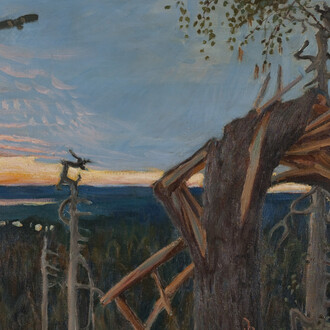"Through the ages Lapland has been a centre of myths and legends; a strangely alluring Ultima Thule. For a long time the area was known mainly through the stories brought back by explorers and adventurers. It was not until the early 1900s, as infrastructure improved, that tourism as such to Lapland began", curator of the exhibition Harri Hautajärvi writes.
"As Finland gained its independence and the Arctic Ocean Highway was constructed, travelling to Lapland became an important national and governmental project. Tourism to Lapland was marketed on the local landscape and architecture, which also came to form its base. Architects and interior designers were engaged to design grand Functionalist hotels and homely tourist hostels and cabins steeped in National Romanticism. At their very best, these became works of art and attractions in themselves."
According to Hautajärvi "photographs depicting the venues made their way around the globe in postcards, magazine articles and books. Hotels and hostels in Lapland were depicted as havens of progress and civilisation from which one could go on day excursions into the wonderful nature to then return to spend the evening in smartly furnished accommodation, complete with a warm fire and service in the lounge."
"Travelling to Lapland remained a pastime for the few, and predominantly wealthy, up until the 1950s. Since the 1960s, tourism has grown into a substantial industry; during the last decades the largest fell resorts have grown more or less into towns."
"The earliest tourist accommodations planned for Lapland evoke the era when travelling here was still surrounded by a lustre of luxury and Arctic romance," Hautajärvi states.
The exhibition is curated by Architect and Doctor of Science in Technology Harri Hautajärvi and it is based on his dissertation "Autiotuvista lomakaupunkeihin. Lapin matkailun arkkitehtuurihistoria."













